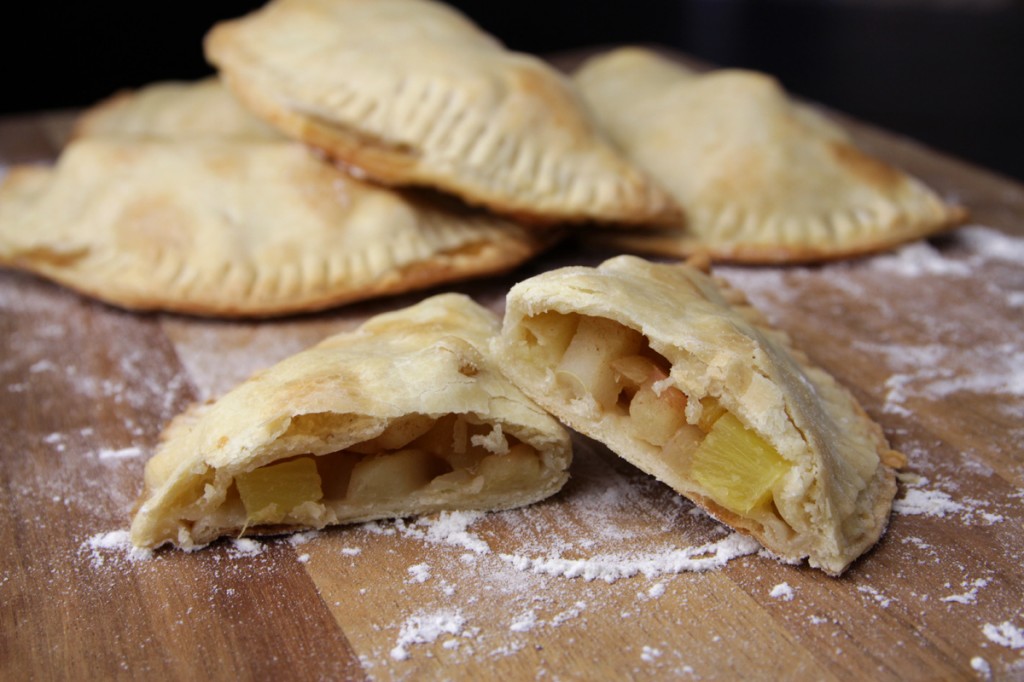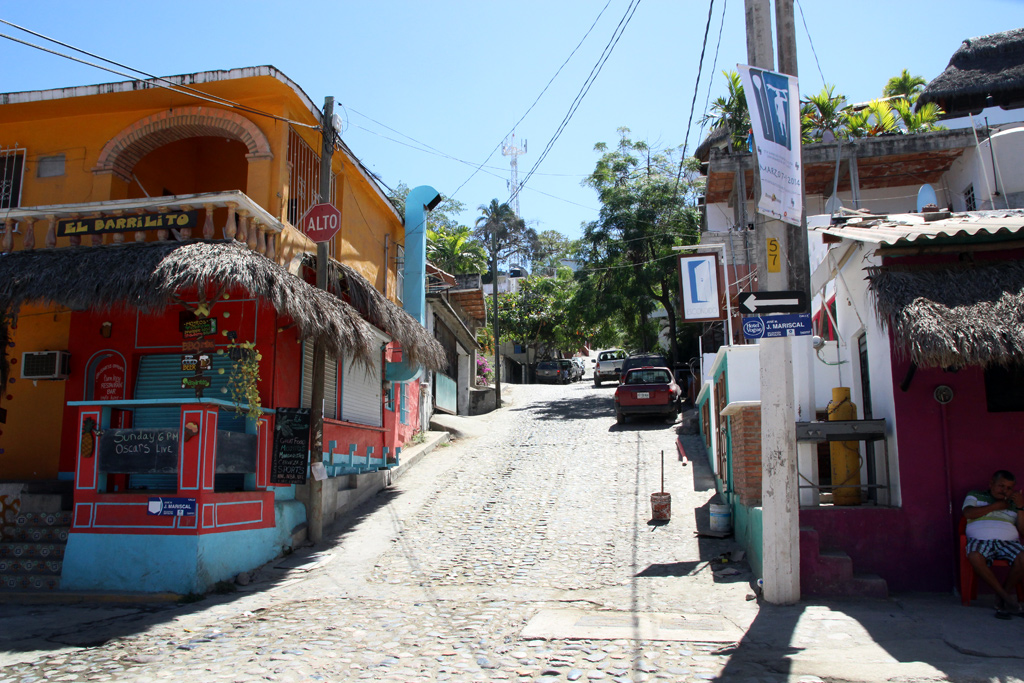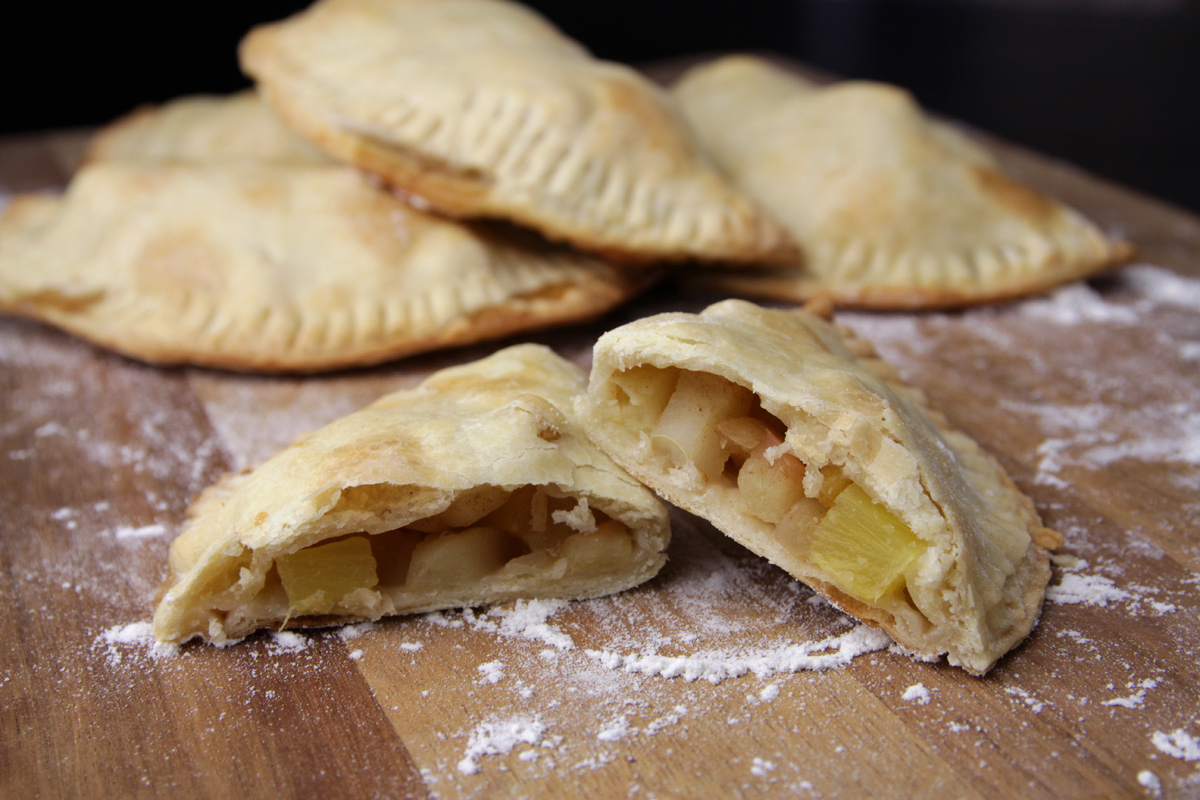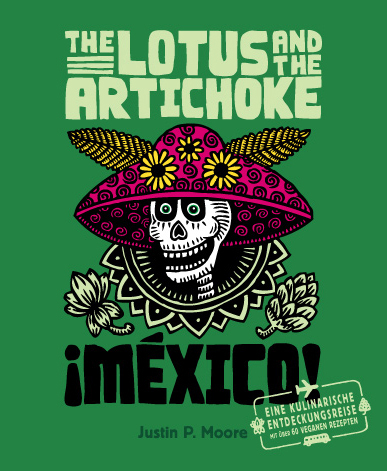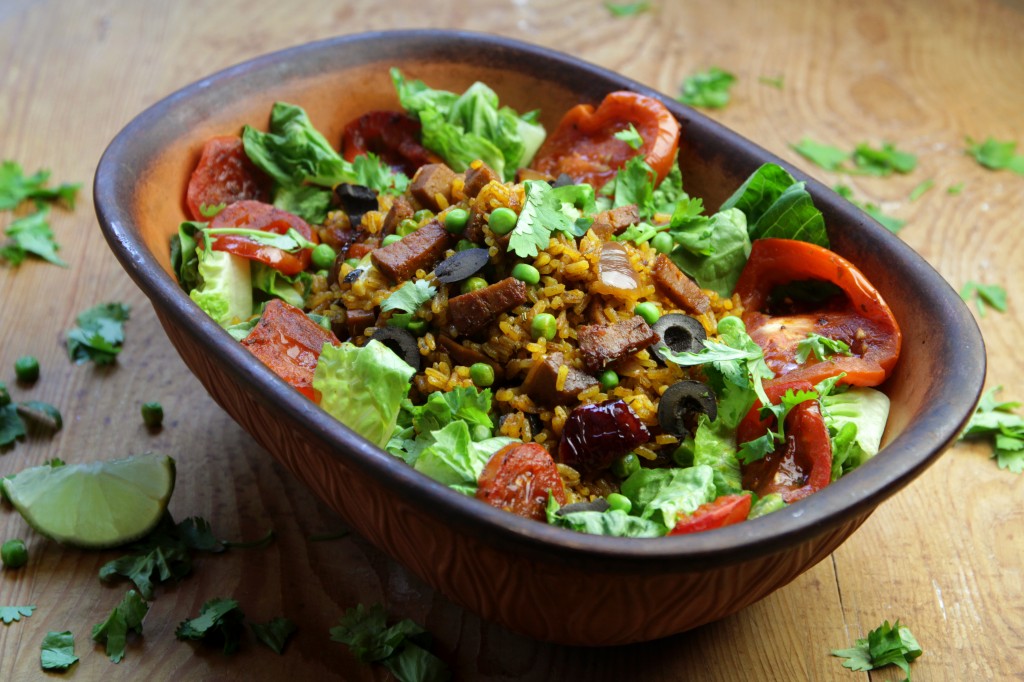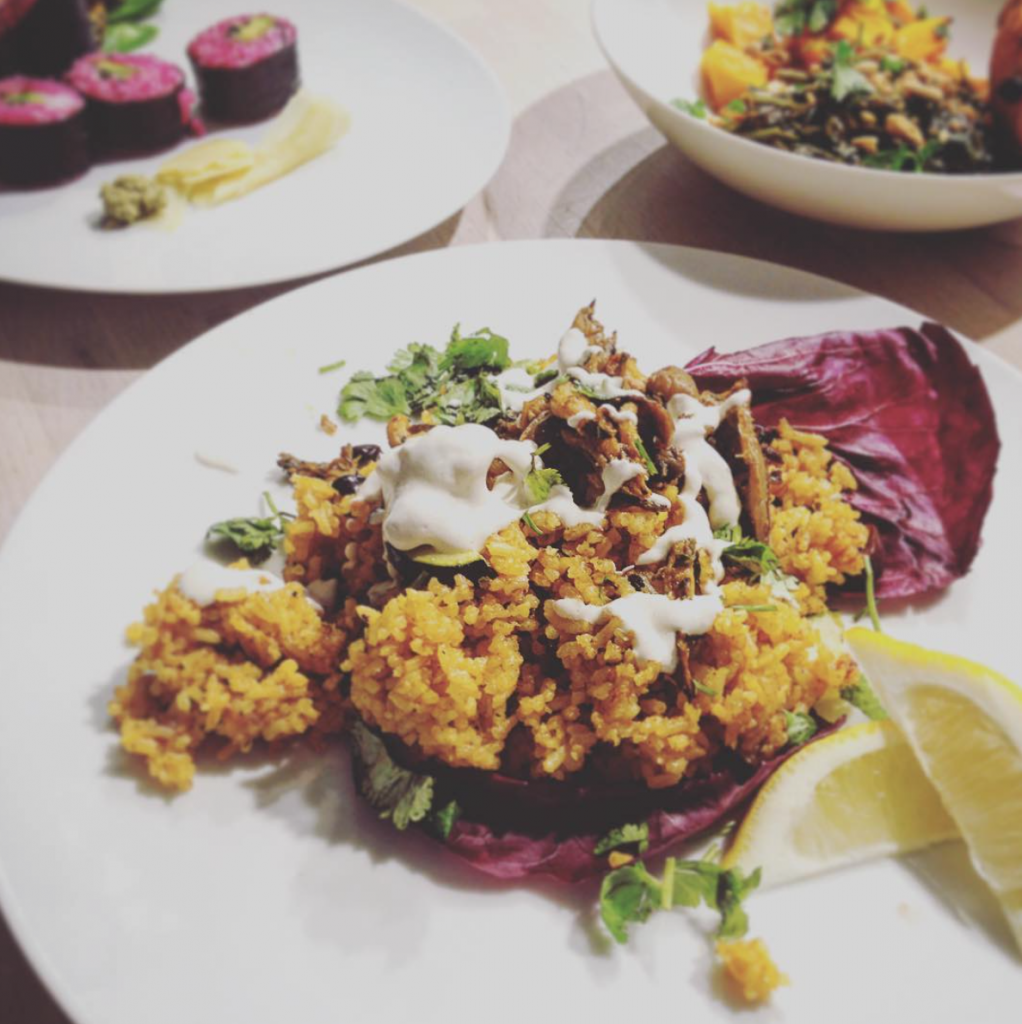When I was living in the small town of Lo de Marcos, on the Pacific Coast of Mexico, we’d often take day trips to Sayulita. Sayulita, like San Pancho and Lo de Marcos, used to be just a sleepy fishing village. All three towns are just up the coast from Puerto Vallerta – which has been in the tourist guidebooks for quite some time. In the 1960s and 1970s, PV was built up for tourism (kind of like planned tourism destinations Acapulco and Cancun). It was also around this time that surfers “discovered” Sayulita, which remained pretty much a secret for a while.
Over the next few decades, tourism and expat enclaves grew and migrated along the Nayarit coast, creating what it is now: cities, towns, and villages coming to terms with all of the holiday traffic and escape artists. In addition to surfing, Sayulita is popular for weddings and honeymoons, yoga retreats, artistic and culinary workshop getaways, souvenir and craft shopping, and of course: respite from the louder and brasher cities.
For me, Sayulita will always be about empanadas.
Going to Sayulita always meant going to my favorite little hole-in-the-wall empanada take-out bakery. We’d leave Lo de Marcos in the morning on the local bus, ride about half an hour south, down the coast along jungle and oceanview roads. The bus stand was a good, hot, 10 to 15 minute walk to the “downtown”. As we approached the main town square, my mouth would already be watering, anxious to see what kind of empanadas were there. You see, this is part of why we tried to leave early and arrive before lunch. By mid afternoon, the bakery would always sell out of at least one of my favorites: Empanadas de Manzana (with apple filling) and Empanadas Espinaca y Papas (spinach & potato filling).
This place only made and sold empanadas, and nothing else. You’d just walk up to the counter, see what was listed on the chalkboard, and then place your order. The baked pastries never got a chance to cool off. Usually they rarely spent a few minutes on the counter in their baskets before they’d be bought, carried away, and devoured.
I’d buy a bunch of whatever vegan empanadas they had, and then bring them back to the park for a family picnic. The rest of the day was usually spent sipping coconut water or fresh juice, watching surfers (and absolute beginner surfer lessons taking place on the beach), strolling around, and then, once we got hungry again, enjoying an excellent meal at La Esperanza, or our favorite taquería (whose name I’ve long since forgotten) just off the main street.

This photo of me with my surfboard in Lo de Marcos has nothing to do with Empanadas. Unless perhaps I ate empanadas that morning in Sayulita. Which is entirely possible.
Back in Germany, I got to work perfecting my Empanada recipe
Sure they’re great with just apple, but adding fresh pineapple is mind-blowing. I love the tropical touch, which is a really powerful, nostalgic reminder of the my months spent living next to the beach in Mexico.
I suggest using a good, buttery vegan margarine. Don’t use cheap stuff, and try to find something that is recommended for baking. Cheaper margarines have too much water in them, and you’ll miss out on the rich, creamy flavor for your dough. In Germany I use Alsan, and in the U.S.A. Earth Balance makes some good stuff that will work for baking. (If you’ve got other suggestions for readers, please leave a comment below!)
Also, keep an eye on your goodies in the oven! If you overbake them, you’ll be disappointed by the texture. Since I’m really not that great of a baker, I actually take the empanadas out of the oven a minute or two before I think they’re done. A bit soft and chewy is always better than hard and dry! Keep fresh, hot empanadas covered or wrapped with a damp dishtowel so they don’t dry out, too. Oh, and always be careful with the first bite – I don’t even know how many times I’ve burned my tongue on blazing hot empanada filling!
Enjoy!
Empanadas de Manzana y Piña
Apple Pineapple Empanadas
makes 8 to 10 / time 45 min +
recipe from The Lotus and the Artichoke – MEXICO
(Rezept auf Deutsch unten)
dough:
- 3 cups (375 g) flour (all-purpose / Type 550)
- 1 1/2 tsp sea salt
- 1 Tbs sugar
- 1/4 tsp baking powder
- 8 Tbs (110 g) margarine
- 3/4 cup (180 ml) cold water
- 2 Tbs soy milk or rice milk for glaze optional
- Combine flour, salt, sugar, baking powder in large mixing bowl.
- Cut margarine into thinly sliced pieces and add to bowl. Using hands, knead margarine into flour mix.
- Gradually add in cold water, continue kneading a few minutes until dough is rubbery and smooth. If needed use slightly more flour or water.
- Pull and form into 8–10 equal sized balls and return to bowl. Cover and let sit 20 min.
apple & pineapple filling:
- 2 medium apples peeled, finely chopped
- 1 cup (140 g) pineapple finely chopped
- 1/2 tsp cinnamon ground
- 1 Tbs sugar
- Combine chopped apples and pineapple with cinnamon and sugar in large bowl. Mix well.
- Pour 2 Tbs soy milk (or water) into cup or small bowl.
- Preheat oven to 400 F / 200 C / level 6.
- On floured surface, roll out a dough ball with rolling pin (or bottle) to 1/4 in (1 cm) thickness. Using a medium bowl or saucer as a guide, cut circle with knife. Roll up and save trim.
- Put 2 Tbs filling onto a dough circle. Dip finger in soy milk (or water) and trace around outer edge to help seal. Fold over in half and press edges firmly with a fork to seal.
- Brush top with soy (or rice) milk, if desired, for glaze. Carefully transfer to baking tray. Repeat for all empanadas.
- Bake until golden brown and edges start to crisp and darken, about 20–25 min.
- Allow to cool 5 min before serving: Filling is very hot!
Variations:
Other fillings: Experiment with strawberries, raspberries, blueberries, chopped pears, walnuts, hazelnuts, banana, chocolate… or whatever else you come up with!
Empanadas de Manzana y Piña
Süße Apfel-Ananas-Taschen
8 bis 10 Stück / Dauer 45 Min. +
Rezept aus The Lotus and the Artichoke – MEXICO!
Teig:
- 3 Tassen (375 g) Mehl (Typ 550)
- 1 TL Meersalz
- 1 EL Zucker
- 1/4 TL Backpulver
- 8 EL (110 g) Margarine
- 3/4 Tasse (180 ml) kaltes Wasser
- 2 EL Soja- oder Reismilch wenn gewünscht
- Mehl, Salz, Zucker und Backpulver in einer großen Schüssel vermischen.
- Margarine in kleinen Stückchen in die Schüssel geben und mit den Händen unter die Mehlmischung kneten.
- Weiterkneten und dabei nach und nach kaltes Wasser zugießen, bis der Teig glatt und elastisch ist. Bei Bedarf etwas mehr Mehl oder Wasser einkneten.
- In 8–10 gleichgroße Teigkugeln formen und in die Schüssel legen. Abdecken und 20 Min. ruhen lassen.
Apfel-Ananas-Füllung:
- 2 mittelgroße Äpfel geschält, klein gewürfelt
- 1 Tasse (140 g) Ananas klein gewürfelt
- 1/2 TL Zimt gemahlen
- 1 EL Zucker
- In einer großen Schüssel Apfel– und Ananasstückchen mit Zucker und Zimt vermengen.
- 2 EL Soja– oder Reismilch (oder Wasser) in eine Tasse geben.
- Ofen auf 200°C / Stufe 6 vorheizen.
- Teigkugeln auf einer bemehlten Oberfläche mit einem Nudelholz oder einer Flasche 1 cm dick ausrollen. Eine mittelgroße Schüssel oder Untertasse darauf legen und mit einem Messer Kreise ausschneiden. Übrigen Teig verkneten, erneut ausrollen und Kreise ausschneiden.
- Auf jeden Teigkreis 2 EL der Füllung geben. Finger mit Pflanzenmilch (oder Wasser) befeuchten und damit am äußeren Teigrand entlangfahren, damit es beim Verschließen hält. Zu einem Halbmond umklappen und die Ränder mit einer Gabel oder den Fingerkuppen fest zusammendrücken.
- Backfertige Empanadas wenn gewünscht mit Pflanzenmilch bepinseln. Vorsichtig auf ein mit Backpapier ausgelegtes Backblech legen. 20–25 Min. backen, bis die Empanadas knusprig und goldbraun sind.
- Vor dem Servieren mindestens 5 Min. abkühlen lassen – die Füllung ist sehr heiß!
Variationen:
Andere Füllung: Mit Erdbeeren, Himbeeren, Blaubeeren, Birnen, Walnüssen, Haselnüssen, Bananen, Schokolade oder was immer dir noch einfällt ausprobieren.

